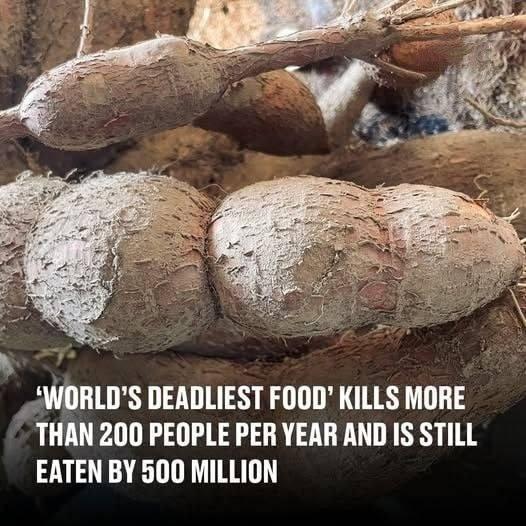ADVERTISEMENT
The World’s Deadliest Food: Consumed by 500 Million, Yet Claims Over 200 Lives Annually
Imagine enjoying a meal that, while incredibly popular and widely consumed, has the potential to be deadly. It’s hard to believe, but one such food exists, and it is responsible for more than 200 deaths each year. Despite its dangerous nature, over 500 million people worldwide still consume this food regularly. What is this deadly food, you ask? It’s none other than fugu, the Japanese pufferfish.
Fugu is considered a delicacy in Japan and is highly prized for its delicate, slightly sweet taste and unique texture. However, it’s also one of the most dangerous foods in the world, thanks to its potent toxin, tetrodotoxin, which can be lethal even in the smallest amounts. In this article, we’ll delve into the world of fugu, exploring how it’s prepared, why it’s so deadly, and why so many people continue to risk their lives to eat it.
What is Fugu?
Fugu is the Japanese word for pufferfish, a species of fish found in the waters surrounding Japan, China, and Korea. While the pufferfish is famous for its ability to inflate its body when threatened, it’s the tetrodotoxin inside the fish that makes it a dangerous culinary experience.
Tetrodotoxin is a neurotoxin that is found in certain organs of the pufferfish, most notably the liver, ovaries, and intestines. This toxin is incredibly potent — up to 1,200 times more lethal than cyanide. Even a small amount of tetrodotoxin can cause paralysis and death by suffocation, as it blocks sodium channels in the nervous system, causing muscles to become paralyzed.
What makes fugu particularly dangerous is that the fish can appear perfectly normal. When prepared improperly, even a slight mistake in removing the toxic organs can result in poisoning. Despite this, fugu remains a sought-after dish for those daring enough to try it.
How is Fugu Prepared?
The preparation of fugu is an art form that requires a great deal of expertise. In Japan, only licensed chefs who have undergone years of rigorous training are legally allowed to prepare fugu. The training includes learning to identify the toxic parts of the fish and understanding how to safely remove them. Fugu chefs must pass a government certification exam to be allowed to serve the fish in restaurants.
The preparation process involves:
- Removing the Toxic Organs: The liver, ovaries, and intestines of the pufferfish are the main sources of tetrodotoxin. A skilled fugu chef carefully removes these organs while ensuring no contamination of the edible parts of the fish.
- Slicing the Flesh: The fish is then carefully filleted, and the flesh is sliced into thin pieces. The delicate, translucent slices are often served in a shabu-shabu (hot pot) or as sashimi.
- Serving the Dish: Fugu can be served in various forms, including raw (sashimi), in soups, or even deep-fried. It’s typically served with a dipping sauce made from soy sauce and vinegar, often accompanied by daikon radish.
The skill of the chef is paramount in ensuring that the fish is safe to eat. Even a slight mistake can lead to poisoning, which is why fugu is only served in specialized restaurants and is often considered a luxury experience for those looking to take the risk.
The Dangers of Tetrodotoxin
Tetrodotoxin is incredibly potent and can cause death within hours of ingestion. Symptoms of poisoning can include:
- Numbness or tingling in the face and limbs
- Difficulty breathing due to paralysis of the diaphragm
- Nausea and vomiting
- Dizziness or fainting
- Loss of consciousness
Once consumed, the toxin acts quickly, blocking sodium channels in the nerves, which interferes with the transmission of signals between the brain and muscles. This leads to paralysis, and in severe cases, respiratory failure and death. There is no known antidote for tetrodotoxin poisoning, and victims typically die from suffocation due to paralysis of the respiratory muscles.
While the risk of poisoning is extremely low when fugu is prepared by a skilled and licensed chef, the possibility of consuming a dangerous amount of tetrodotoxin is ever-present, which is why many consider it the “world’s deadliest food.”
Why Do People Continue to Eat Fugu?
Despite its deadly reputation, fugu remains a beloved delicacy in Japan and other parts of East Asia. There are several reasons why people continue to eat this high-risk food:
- The Thrill of the Risk: Many people are drawn to the idea of eating something dangerous. The thrill of consuming a food that could potentially be lethal adds an element of excitement to the dining experience. For some, the risk is what makes it such a sought-after dish.
